Once a dominant feature of the southeastern United States, canebrakes dominated hundreds of thousands of acres along floodplains and stream bottoms. Large expanses of canebrakes were often described by early explorers in the Southeast. In the 1770's, William Bartram explored much of the southeast United States and describes canebrakes often in his description of floodplains and creek bottoms. From these descriptions, it appears that canebrakes were both ubiquitous and expansive. While traveling along the floodplain of the Mississippi River in present-day Louisiana, he describes a road cut through a "cane forest" for about 8 miles. Traveling along creek bottoms in present-day Warren County, Georgia, he remarked, ". . . cane meadows always in view on one hand or the other." Large expanses of canebrake are also described by Edward Mease in West Florida in 1770-1771, John Drayton in the valleys of upcountry South Carolina, John Filson in Kentucky in 1784, Edmund Ruffin reporting of early settlement in central Alabama in 1817, and Henry Hammond in South Carolina. Rivercane was often described as twenty-five feet and higher, with diameters of several inches.
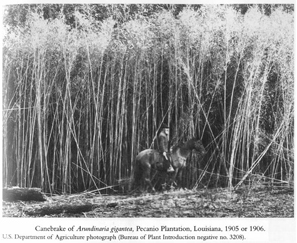
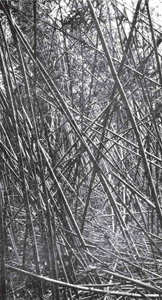 It is likely that that extent of canebrakes fluctuated with human populations. Canebrakes thrive in moderate disturbance regimes, such as fire, grazing, flooding and forest openings. Prior to European settlement, large expanses of fertile canebrakes were likely converted to agricultural fields by Native Americans. Native American populations were decimated by diseases brought by European settlers. It has been estimated that between 80-95% of the population was destroyed by diseases such as smallpox, measles, and typhoid fever, leaving huge settlements abandoned. During this period, canebrakes could expand into abandoned agricultural fields. In a deserted Spanish plantation near the Suwannee River, Florida, William Bartram describes: "Now at once opens to view, perhaps the most extensive cane-break that is to be seen on the face of the whole earth... The canes are ten feet in height, and as thick as an ordinary walking-staff; they grow so close together, there is no penetrating them without previously cutting a road)."
It is likely that that extent of canebrakes fluctuated with human populations. Canebrakes thrive in moderate disturbance regimes, such as fire, grazing, flooding and forest openings. Prior to European settlement, large expanses of fertile canebrakes were likely converted to agricultural fields by Native Americans. Native American populations were decimated by diseases brought by European settlers. It has been estimated that between 80-95% of the population was destroyed by diseases such as smallpox, measles, and typhoid fever, leaving huge settlements abandoned. During this period, canebrakes could expand into abandoned agricultural fields. In a deserted Spanish plantation near the Suwannee River, Florida, William Bartram describes: "Now at once opens to view, perhaps the most extensive cane-break that is to be seen on the face of the whole earth... The canes are ten feet in height, and as thick as an ordinary walking-staff; they grow so close together, there is no penetrating them without previously cutting a road)."
European settlement brought about a decline in canebrakes. Rivercane provided a year-round source of food for livestock, which was greatly preferred above other grasses. The overgrazing by domestic livestock devastated canebrakes. Settlers also recognized canebrakes as areas of fertile soil, and began clearing these areas for agriculture. Today, it is estimated that canebrakes occupy less than 2% of their original habitat .
Description
Rivercane is a monopodial leptomorphic bamboo with evergreen foliage arising from rhizomes found in the upper 15 cm of soil. It grows in neutral to acidic soils, where it is restricted to seepages, stream terraces, and natural levees. Rivercane needs moist soils with good drainage (sandy soils). It can tolerate inundation, but not prolonged submergence.
Rivercane is sometimes confused with the exotic invasive, golden bamboo (Phyllostachys aurea), which also grows in similar habitats and can take over areas very quickly. Golden bamboo has thicker culms (1 to 6 inches in diameter) and smaller, more abundant leaves along the culm.
Rivercane shoots arise from rhizomes and emerge with culm leaves. Culms are unbranched until they reach their mature height. Culm growth begins in early spring to mid-summer, with a growth rate up to 38 mm/day. Culms reach their maximum diameter in primary growth, followed by the elongation of internodes . The growth habit is erect and self supporting as woody tissues harden through lignification of the culm tissues. Leaves are produced at the nodes and are made up of a sheath, inner ligule, outer ligule, and blade . Between the sheath and the blade, the leaf narrows abruptly to form a pseudopetiole. A bud forms at each node and is capable of producing a branch. Culms can produce 3-5 branches per node . Individual culms live an average of 5-10 years . The synflorescence is paniculate with 1-3 orders of branching. Spikelets have 2-3 (5) glumes, 3 lodicules, 1-many fertile florets, with a rudimentary floret at the apex.
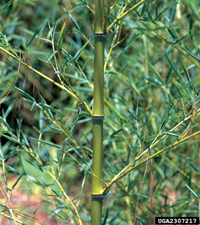
Like other bamboos, rivercane flowers sporadically and often simultaneously over a large area , perhaps only every 30-40 years, though this has also been observed anywhere from 3 to 50 years. Flowering culms have bladeless sheaths arising from the rhizome. The flowering period seems to continue for about a year, with the flowering culms drying after setting seed. Large canebrakes have been observed to die following a flowering event, however, this is not always the case, with some individual culms flowering yearly. The length of time required for a seed to germinate, grow to full size and die is yet unknown, though it has been suggested to be 20 years or more. Recently, an 8-month-old seedling was observed flowering in a greenhouse. Because of such sporadic flowering events, there is still much of the life history and ecology of rivercane that is unknown.
Taxonomy and Systematics
Rivercane is a grass (Family Poeae) native to North America. As a bamboo, it is included in the subfamily, Bambusoideae and the Bambuseae tribe. Although it shares the subtribe, Arundinariinae, with species from East Asia and Africa, the genus Arundinaria is narrowly defined as only native North American bamboos (Arundinaria sensu stricto).
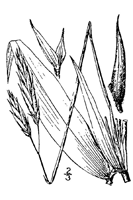
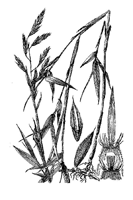
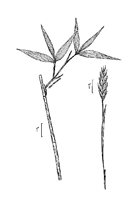
Depending on the source, there are two or three species of Arundinaria recognized in North America. Some treatments recognize two subspecies of rivercane: Arundinaria gigantea (Walter) Muhl. ssp. gigantea (giant cane) and Arundinaria gigantea (Walter) Muhl. ssp. tecta (Walter) McClure (switchcane). Others recognize A. gigantea and A. tecta as separate species, with A. gigantea occurring inland along floodplains and A. tecta occurring in acidic swamps, seeps, and bogs of the Coastal Plain. A fairly recent discovery by Lynn Clark and Jimmy Triplett, of Iowa State University, has led to the recognition of another species, *hillcane (Arundinaria appalachiana), a deciduous bamboo found in the upland areas of western North Carolina.